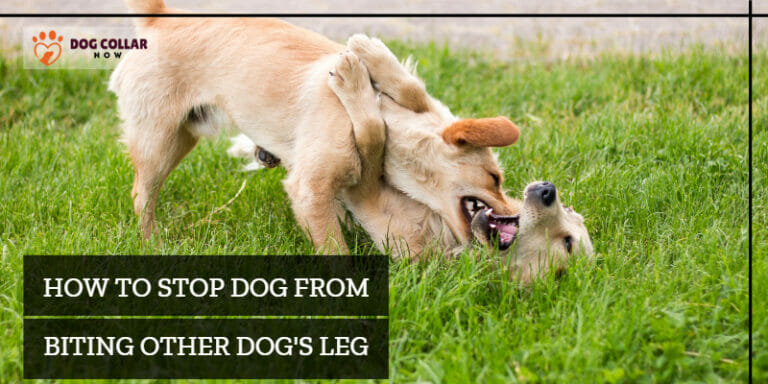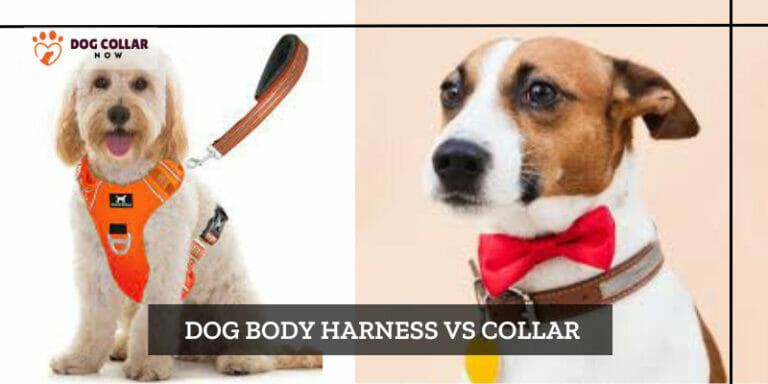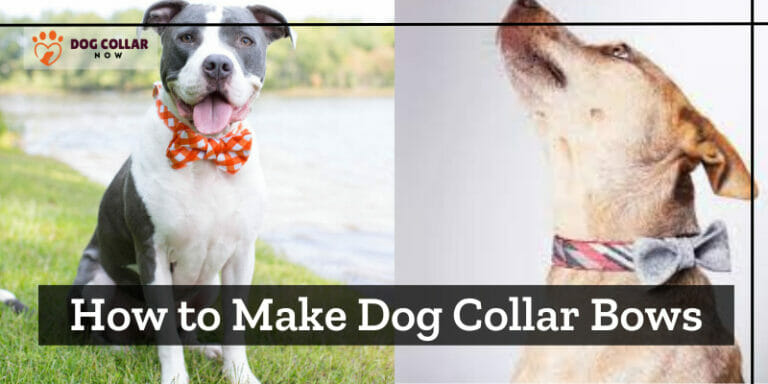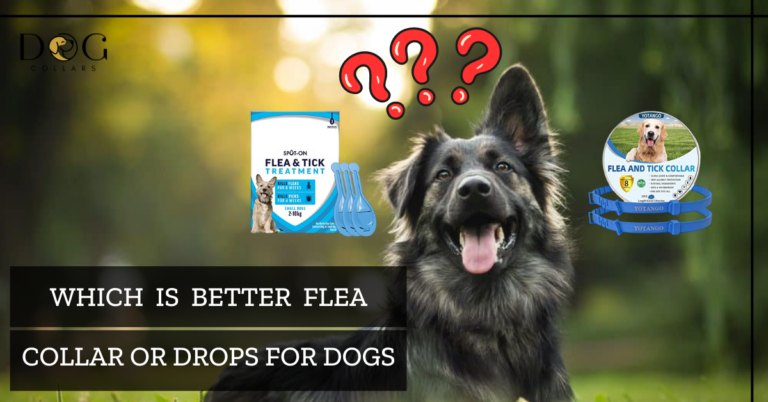How To Loosen A Dog Collar – 4 Easy Steps
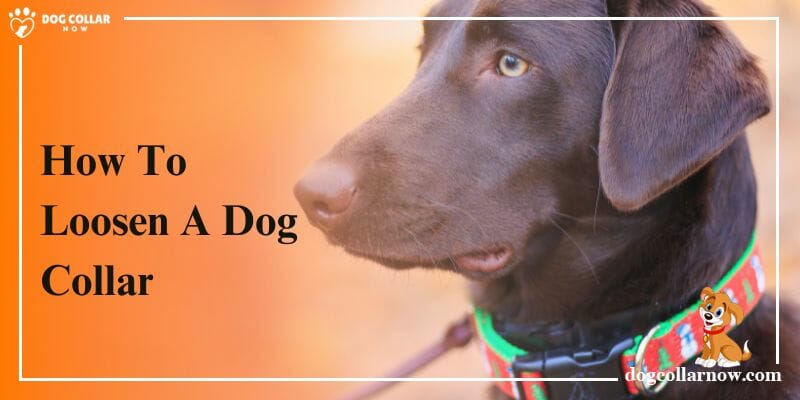
Hey there, fellow dog lovers! As people who adore dogs, we want nothing but the best for our furry buddies. It’s essential to ensure that their collars are not too tight, so they can enjoy their adventures without any discomfort.
We’ve all experienced the challenge of adjusting our dog’s collar to the right fit. But it’s crucial for our furry friend’s well-being. To avoid discomfort and health problems, The (HSUS) recommends that collars should fit comfortably but loose enough for two fingers to fit between the collar and your dog’s neck.
To loosen a dog’s collar, find the adjustment buckle and adjust until the collar is loose enough. Simple, right? However, we must regularly check our dog’s collar and harness for correct fit and replace them as needed to keep them safe and comfortable.
I will take a deeper dive into the topic of how to loosen a dog collar, and provide you with all the information you need to make sure your pup is happy and healthy. So, let’s embark on this journey together and show our furry friends just how much we love them!
How To Loosen A Dog Collar (Step-by-Step Guide)
Here’s a detailed guide to help you with how to adjust your pet choker around the canine neck and prevent them from loosening.
Step 1: Remove Any Attachments

Before you start adjusting it for comfort, it’s essential to remove any attachments, such as ID tags. This will make it easier to adjust the neckband and prevent any accidental tugging on the tags that could cause discomfort to your pet.
Step 2: Find The Collar Adjustment Buckle
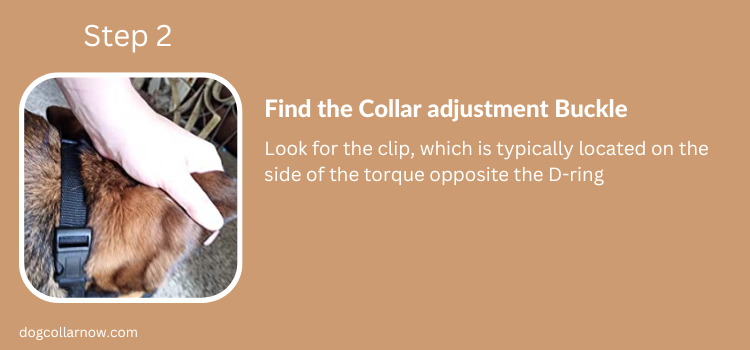
One question that generally comes to mind in many fellows’ pet parents that how to fix a dog strap buckle whether it is a plastic, flat, or metal. Most collars have a clip that can be used to adjust its size. Look for the clip, which is typically located on the side of the torque opposite the D-ring.
Step 3: Loosen The Collar By Pulling On The Adjustment Buckle
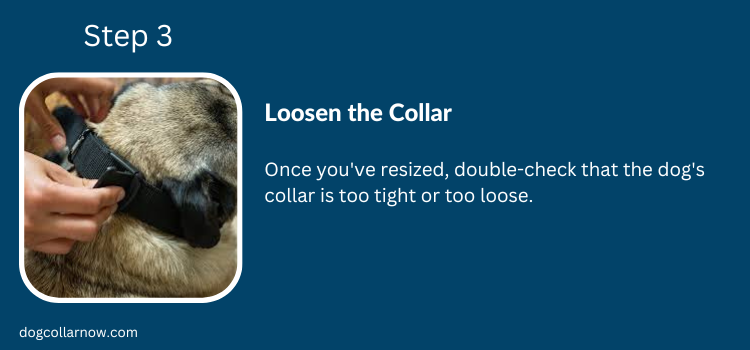
To loosen, pull on the adjustment clasp until you can comfortably fit two fingers between the collar and neck. You don’t want the choker to be too loose or too tight, so make sure to find the right balance.
Step 4: Recheck To Make Sure It’s Not Too Loose Or Too Tight
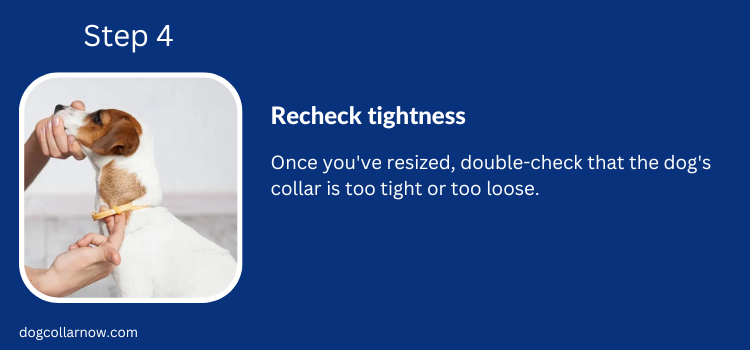
Once you’ve resized, double-check that the dog’s collar is too tight or too loose. You should be able to fit fingers from the area where the collar rests to your dog’s neck without the collar slipping off or being too snug.
How Do I Know If My Dog’s Collar Is Too Tight?
Here are some signs that your pet’s choker may be too tight:
- Your dog seems uncomfortable or in pain when the choker is on.
- The choker leaves marks on your dog’s skin.
- Your dog has difficulty breathing or swallowing when the choker is on.
- The neckband is so tight that it limits movement.
How To Stop A Dog Collar From Loosening
There are several ways to stop a dog collar from loosening.
it is important to ensure that it is properly fitted. A choker that is too loose will slide off the pet’s neck easily. To adjust the fit of the collar, check that you can fit a pair of fingers between the strap to your furry companion’s neck.
Additionally, consider purchasing a necklace that has a clip or a clasp fastener, as these tend to provide a more secure fit than those without clips or clasps. A collar with a martingale design, which tightens the collar slightly when the dog pulls, can also help prevent it from slipping off.
Finally, check regularly to ensure that it hasn’t become too loose over time. With these precautions, you can keep your pup’s neckband secure and prevent it from slipping off.
Best Dog Collar Sizing Chart
Dog chokers come in all different shapes and sizes, and finding the right one for your dog can be a bit of a challenge. But never fear! We’re here to help you find the perfect fit for your furry friend.
To start, measure your pup’s neck with a tape measure. The measurement should be taken at the base of the neck, where the neckband will sit. Once you have that measurement, consult our sizing chart below to find the right size collar for your dog.
Size Neck Measurement (in inches)
| Size | Measurement(inches) |
|---|---|
| XS | 8-10 |
| S | 10-12 |
| M | 12-14 |
| L | 14-16 |
| XL | 16-18 |
Collar Features to Consider
When choosing a collar for your dog, there are several features to consider.
- First, the material of the collar – both nylon and leather collars are popular options. Leather collars are durable and stylish, but may not hold up well if your dog enjoys water activities or rough play at the dog park. Nylon collars are lightweight and water-resistant, making them a great choice for active dogs.
- Second, consider the hook- a strong and secure one is important to ensure your dog’s safety.
- Lastly, consider the width of the collar – a wider choker may be more comfortable for larger dogs, while a smaller choker is ideal for smaller breeds.
By considering these features when selecting a collar for your furry friend, you can ensure they stay safe and comfortable while out and about.
How to Soften a Nylon Dog Collar
These dog chokers are durable and long-lasting, but they can be stiff and uncomfortable for your furry friend. Fortunately, there are several ways to soften a nylon dog collar. Firstly, remove the collar from your dog to ensure it is not damaged during the softening process.
- One option is to soak the collar in warm water mixed with a fabric softener for at least 30 minutes before rinsing thoroughly and allowing it to air-dry.
- Alternatively, you can apply a small amount of coconut oil or a leather conditioner to the collar and rub it in well, allowing it to absorb overnight before wiping off any excess.
- Be careful not to overdo the treatment, though, as too much oil can stain furniture, clothing, and other surfaces. With one of these methods, you can make your dog collar feel more comfortable and pleasant for your pup to wear.
How To Loosen A Martingale Collar?
If you have a martingale dog collar that’s too tight, it’s important to loosen it immediately. First, locate the adjustment clasp, which is usually located on the loop that is connected to the leash. Once you find it, loosen it by sliding it upward until the collar feels loose enough for your dog’s comfort.
Check to make sure that your dog can still breathe normally, and that the collar is not dangling too low on your canine neck. If you’re still having trouble, use your fingers to gently pull apart the two loops of the collar, which should create a bit of slack.
Be careful not to overdo it or you may end up making the collar too loose, which can be dangerous. Always make sure the collar is properly fitted before taking your dog for a walk.
How To Adjust Nylon Dog Collars For Your Dog?
To make adjust dog collar, locate the adjustment clip on the collar’s side. Proceed to separate the two metal prongs that are keeping the adjustment clip in position using your fingers. Afterward, gently move the adjustment clip along the collar’s length to slacken it. Finally, reattach the prongs to keep the adjuster clip steady in its new spot.
What Type Of Dog Collar Works Best?
There are a few things to consider when choosing a collar for your dog- breed, size, and activity level. For example, a smaller dog may do well with a simple clasp or slip collar, while a larger, more active dog may need a martingale or prong collar. Below is a more detailed breakdown of each type of collar:
Buckle or Slip Collars:
These are the most common types of collars and are typically made from leather or nylon. They fasten with either a clip or a slide-lock, making them adjustable to fit on the neck. Clasp collars are best for dogs with shorter fur, as the clip can sometimes get caught in longer fur. Slip collars should only be used on dogs that are comfortable with them- some dogs may find them uncomfortable or even dangerous if they catch on something (i.e. if the dog panics and tries to pull away.
Martingale Collars:
These collars are similar to slip collars but have an extra loop that tightens when the leash is pulled (but not so tight that it chokes the dog). This makes them ideal for dogs who pull on the leash, as it provides gentle correction without the risk of choking. Martingales are also good for dogs with shorter necks, as they prevent the collar from slipping off over the head.
Prong/pinch Collars:
These types of collars should only be used under supervision and with proper training for the professional dog. Prong collars have metal spikes that pinch the skin when the leash is pulled, making them a useful tool for correcting behavior in dogs that pull on the leash or are difficult to train.
However, they should not be used if your dog has sensitive skin or neck issues- these collars can cause serious injury if used incorrectly.
Harness / Leash:
Harnesses provide an alternative to collars and are ideal for smaller breeds or dogs with breathing problems. They distribute pressure more evenly around the chest and neck, so they won’t choke or restrict movement as a collar can. They also give you more control over your dog when walking, since you can attach the leash to both the back and front of the harness.
Conclusion
Loosening your dog’s collar is crucial for their comfort and safety. A collar that is too tight can cause pain, injury, or even death, while a collar that is too loose can easily slip off.
In this article, we provided a step-by-step guide on how to loosen a dog collar, as well as signs that indicate a collar is too tight. We also discussed how to stop a dog collar from loosening and provided a dog collar sizing chart and features to consider when choosing a collar.
By following these guidelines, you can ensure your dog’s collar fits properly and comfortably, allowing them to move, play, and explore their environment without discomfort or risk of injury.
FAQs:
Can I use a tool to loosen a dog collar?
There are tools available, such as collar extenders or collar loosening pliers, that can help loosen a collar. However, it’s important to use them carefully and not over-tighten or damage them.
Should I check my dog’s collar fit regularly?
Yes, it’s important to check your pup’s collar fit periodically, especially as your pet grows or gains/loses weight. You may need to adjust the collar accordingly to ensure a perfect fit and keep your dog safe.
Can a loose collar be dangerous for a dog?
Yes, a dog collar may be a plastic piece but a loose one can be dangerous for active dogs as it can slip off or get caught on objects, potentially causing the dog to become lost or injured. Additionally, it can also be a choking hazard if the dog tries to chew or bite at it.
What is the right collar width?
The right width and length of the collar depending on its size and weight, but as a general rule, the width should be proportionate to the pup’s neck size and the weight of the hardware should be appropriate for its strength.
How do I know if my pup’s choker is too tight?
You can tell if your pup’s choker is too tight if you are unable to easily slip two fingers under the collar and your neck of the dog. If it is leaving a visible mark or causing discomfort to your dog, it is also too tight for your dog.
How Tight Should a Dog Collar be?
A collar should be tight enough to stay on, but not too tight that it’s uncomfortable or causes breathing problems. If the collar is too loose, the dog slips off or gets caught on something. Check the fit regularly and adjust it as needed.
How often should I replace my pet’s collar or harness and leash?
You should replace your pet’s collar or harness and leash when they become worn out or damaged, or if your dog outgrows them.



